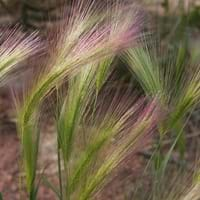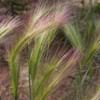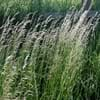Life Span
Perennial
Perennial
Type
Grass
Flowering Plants, Herbaceous Perennial
Types
not available
Bowl of Beauty, Laura Dessert
Habitat
Grassland
Dappled Shade, Woodland Garden
USDA Hardiness Zone
4-8
4-8
AHS Heat Zone
Not Available
8-1
Sunset Zone
2a, 2b, 3a, 3b, 4, 5, 6, 7, 8, 9, 10, 14, 15, 16, 17, 21, 22, 23, 24
A3, 1a, 1b, 2a, 2b, 3a, 3b, 4, 5, 6, 7, 8, 9, 10, 11, 12, 13, 14, 15, 16, 17, 18, 19, 20, 22
Habit
Clump-Forming
Clump-Forming
Flower Color
White
White, Light Pink
Flower Color Modifier
Bicolor
Bicolor
Fruit Color
Not Available
Not Available
Leaf Color in Spring
Purple, Dark Green
Red, Dark Green, Bronze
Leaf Color in Summer
Light Green
Green, Dark Green
Leaf Color in Fall
Purple, Dark Green
Green, Dark Green, Bronze
Leaf Color in Winter
Tan
Not Available
Leaf Shape
Grass like
Lance shaped
Plant Season
Summer, Fall
Spring, Summer
Sunlight
Full Sun, Partial Sun
Full Sun, Partial Sun
Type of Soil
Loam
Clay, Loam, Sand
The pH of Soil
Acidic, Neutral, Alkaline
Acidic, Neutral, Alkaline
Soil Drainage
Average
Well drained
Bloom Time
Spring, Late Spring, Early Summer, Summer
Late Spring, Early Summer
Tolerances
Wet Site, Salt
Not Available
Where to Plant?
Ground
Ground
How to Plant?
Seedlings
Root Division, Seedlings
Plant Maintenance
Medium
Medium
Watering Requirements
Requires a lot of watering, Requires regular watering
Allow soil to be completely dry in between waterings, Water Deeply
In Summer
Lots of watering
Lots of watering
In Spring
Ample Water
Moderate
In Winter
Moderate
Average Water
Soil pH
Acidic, Neutral, Alkaline
Acidic, Neutral, Alkaline
Soil Type
Loam
Clay, Loam, Sand
Soil Drainage Capacity
Average
Well drained
Sun Exposure
Full Sun, Partial Sun
Full Sun, Partial Sun
Pruning
Prune to control growth
Remove damaged leaves, Remove dead branches, Remove dead leaves
Fertilizers
Requires high amount of nitrogen
5-10-10 fertilizer
Pests and Diseases
Red blotch
Leaf Blotch, Ringspot virus, Stem rot, Tip blight, Verticillium Wilt
Plant Tolerance
Wet Site
Drought
Flower Petal Number
Single
Double
Foliage Texture
Medium
Coarse
Foliage Sheen
Matte
Glossy
Attracts
Not Available
Ants, Butterflies, Not Available
Allergy
Asthma, conjunctivitis, Rhinitis
no allergic reactions
Aesthetic Uses
Not Used For Aesthetic Purpose
Cut Flowers, Showy Purposes
Beauty Benefits
Not Available
Not Available
Environmental Uses
Food for animals, Food for insects, Wildlife
Air purification
Medicinal Uses
No Medicinal Use
Alterative, Analgesic, Anodyne, anti inflammatory, Antibacterial, Antiseptic, Hypotensive, Tonic
Part of Plant Used
Whole plant
Root, Seeds, Stem
Other Uses
cultivated as pasture or hay crop, Food for animals, Food for insects
Eaten in a broth, Powdered and mixed with tea
Used As Indoor Plant
No
Yes
Used As Outdoor Plant
Yes
Yes
Garden Design
Bedding Plant, Feature Plant, Groundcover
Cutflower, Feature Plant, Foundation, Mixed Border
Botanical Name
ALOPECURUS
PAEONIA lactiflora 'Shirley Temple'
Common Name
Foxtail Grass
Double Pink Peony, Garden Peony
In Hindi
Foxtail Grass
Double Pink Peony
In German
Foxtail Grass
Doppelte rosa Pfingstrosen
In French
Foxtail Grass
Double Rose pivoine
In Spanish
Hierba de cola de zorra
Doble Pink Peony
In Greek
αλωπέκουρου Grass
Διπλό Ροζ Παιωνία
In Portuguese
grama de foxtail
Duplo Pink Peony
In Polish
ber trawy
Podwójne Pink Peony
In Latin
panicum Grass
Geminus Pink AGLAOPHOTIS
Phylum
Magnoliophyta
Magnoliophyta
Class
Liliopsida
Magnoliopsida
Order
Cyperales
Dilleniales
Family
Poaceae
Paeoniaceae
Clade
Not Available
Angiosperms, Core eudicots, Eudicots
Tribe
Not Available
Not Available
Subfamily
Not Available
Not Available
Number of Species
Not Available
Not Available
Season and Care of Foxtail Grass and Double Pink Peony
Season and care of Foxtail Grass and Double Pink Peony is important to know. While considering everything about Foxtail Grass and Double Pink Peony Care, growing season is an essential factor. Foxtail Grass season is Summer and Fall and Double Pink Peony season is Summer and Fall. The type of soil for Foxtail Grass is Loam and for Double Pink Peony is Clay, Loam, Sand while the PH of soil for Foxtail Grass is Acidic, Neutral, Alkaline and for Double Pink Peony is Acidic, Neutral, Alkaline.
Foxtail Grass and Double Pink Peony Physical Information
Foxtail Grass and Double Pink Peony physical information is very important for comparison. Foxtail Grass height is 30.50 cm and width 30.50 cm whereas Double Pink Peony height is 90.00 cm and width 90.00 cm. The color specification of Foxtail Grass and Double Pink Peony are as follows:
Foxtail Grass flower color: White
Foxtail Grass leaf color: Purple and Dark Green
Double Pink Peony flower color: White and Light Pink
- Double Pink Peony leaf color: Red, Dark Green and Bronze
Care of Foxtail Grass and Double Pink Peony
Care of Foxtail Grass and Double Pink Peony include pruning, fertilizers, watering etc. Foxtail Grass pruning is done Prune to control growth and Double Pink Peony pruning is done Remove damaged leaves, Remove dead branches and Remove dead leaves. In summer Foxtail Grass needs Lots of watering and in winter, it needs Moderate. Whereas, in summer Double Pink Peony needs Lots of watering and in winter, it needs Average Water.





